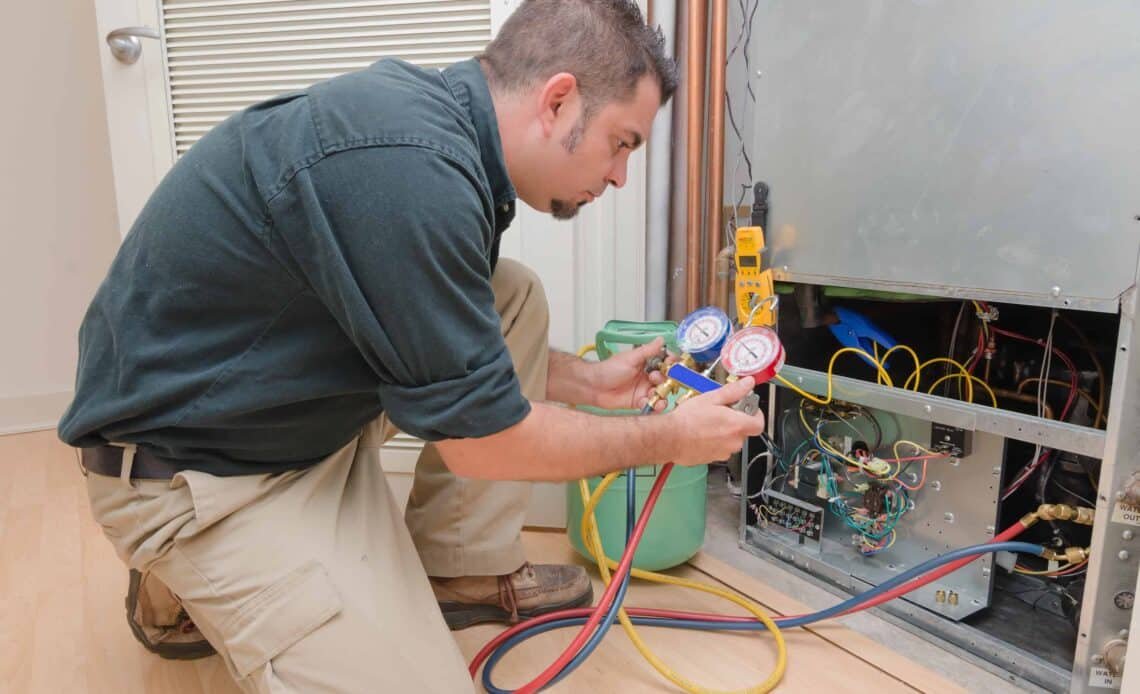Furnaces are essential for keeping your home comfortable during cold weather months, but like any mechanical system, furnaces can develop issues. Common furnace issues can range from thermostat problems to breakdowns. In this article, we’ll discuss some common furnace problems, how to identify them, and what steps you can take to fix them. Keep reading to learn more.
Thermostat Problems

Home thermostat problems are one of the most common issues affecting furnaces. This is because the thermostat is the control center for your furnace, and any malfunction can prevent it from functioning properly. The most common thermostat problems include inaccurate readings, a faulty display, or a faulty wiring connection.
Inaccurate readings can cause the furnace to run too cold or too hot, resulting in an uncomfortable indoor environment. This problem can be caused by a variety of factors, including a malfunctioning thermostat, a poorly calibrated thermostat, or a dirty or faulty sensor. In order to address this, you can either clean the sensor or recalibrate the thermostat.
A blown fuse can cause a faulty display in the thermostat or a malfunctioning display. This can cause the display not to turn on or to display incorrect information. To fix this, you should check the wiring connections, replace the fuse, or replace the display.
Faulty wiring connections can also be a culprit of thermostat problems. If the wiring is not properly connected or has become frayed, this can cause the thermostat to send an inaccurate signal to the furnace. To fix this, you should check all the wiring connections and fix any frayed wires. Before inspecting thermostat wiring, it’s imperative that you shut off the power to the device first.
Short Cycling
Short cycling is a common furnace issue that occurs when the furnace turns on and off more frequently than it is designed to. This can cause a number of problems, including increased energy costs, inefficient heating, and even complete system failure. A number of factors, such as a clogged or dirty air filter, a faulty thermostat, a malfunctioning fan limit switch, or a malfunctioning gas valve, can cause short cycling. It can also be caused by a lack of maintenance, such as failing to check and clean the air filter on a regular basis.
In order to diagnose and fix short cycling, it is important to determine the cause. If the air filter is clogged or dirty, it should be replaced or cleaned. If the thermostat is malfunctioning, it should be checked and recalibrated if necessary. If the fan limit switch is malfunctioning, it may need to be replaced. And if the gas valve is malfunctioning, it should be checked and adjusted if necessary. It is also important to make sure that the furnace is receiving the proper amount of air and fuel and that there are no blockages in the air ducts or vents.
Pilot Light Issues

Pilot light issues are one of the most common issues that arise with furnaces. A pilot light is a small, continuously burning flame that is used to ignite the gas burner in a furnace. When the pilot light goes out, the furnace will not be able to operate, as the burner won’t be ignited. A pilot light can go out for a few different reasons. Most commonly, the pilot light has gone out due to a draft in the room. This could be due to a window being open, a fan running, or a door being opened and closed too frequently. The draft can cause the pilot light to go out.
Additionally, the thermocouple can be the culprit of a pilot light going out. The thermocouple is a metal rod that is connected to the gas valve and detects heat from the pilot light. If the thermocouple is not working correctly, the furnace will not be able to detect the heat from the pilot light, and the pilot light will go out. Finally, a dirty burner orifice can cause the pilot light to go out. The orifice is the small hole that supplies the gas to the burner. If the orifice becomes dirty or clogged, the pilot light won’t be able to receive the necessary fuel and will go out. If your pilot light is going out, it is important to have a professional technician inspect the furnace. The technician can check for drafts, test the thermocouple, and inspect the orifice for any dirt or debris.
Common furnace issues can range from minor inconveniences to serious problems that can affect the performance and safety of the furnace. It is important to pay attention to these issues and address them as soon as possible to prevent further damage and costly repairs.







